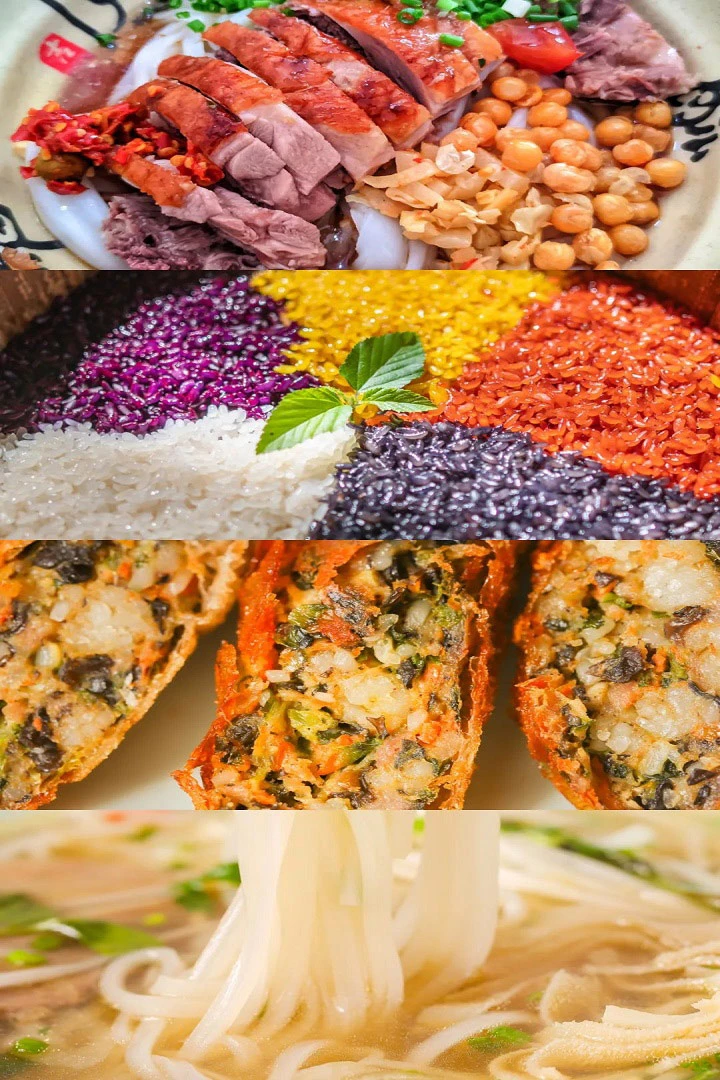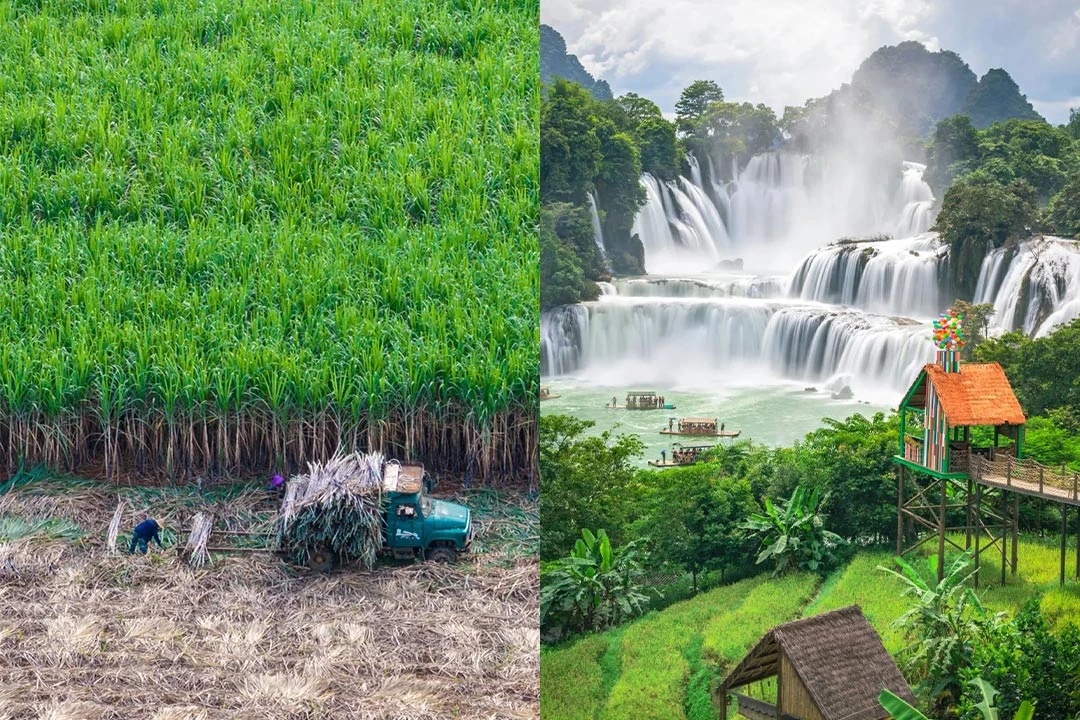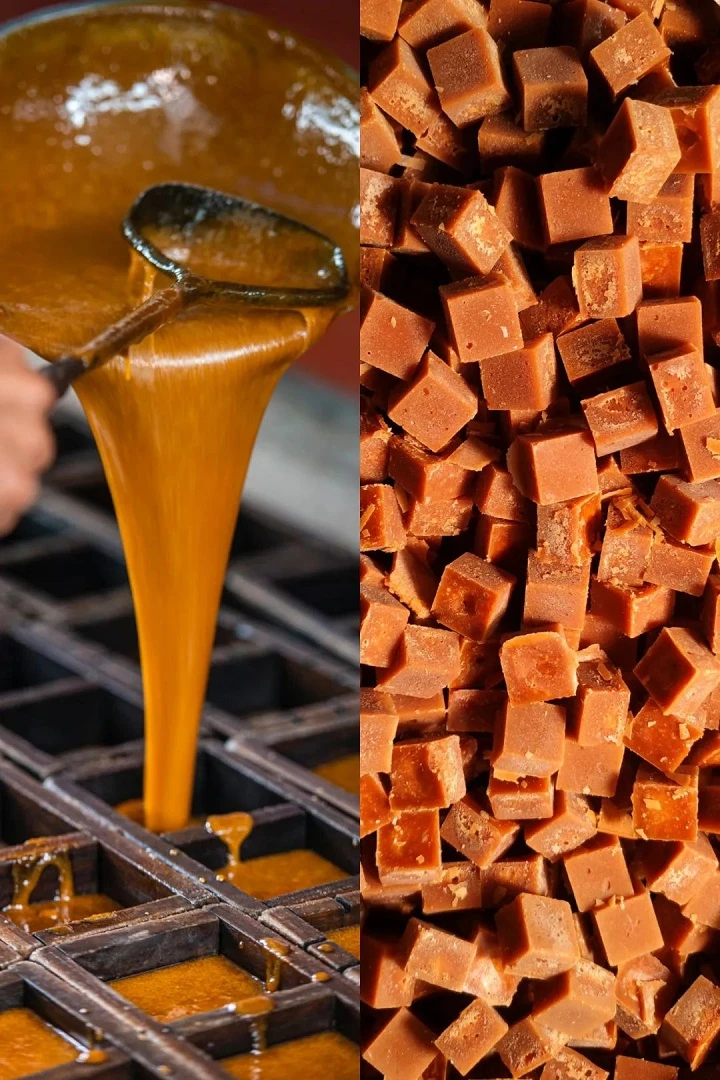"Life is bitter, so add some sweetness." Many know that sugar is a primary energy source and brings joy and anticipation, but few realize that Guangxi produces over 60% of China's sugar. In the southwestern part of Guangxi lies China's sweetest city, where every two residents, one is involved in sugarcane cultivation. This is Chongzuo, also known as "China's Sugar City."
Chongzuo boasts the largest sugarcane planting and sugar production base in China, with an astounding 400,000 hectares dedicated to sugarcane. As visitors come to witness this sea of sugarcane, they are often surprised by the breathtaking beauty of Chongzuo's landscapes. Beyond its reputation as a sugar hub, Chongzuo is an underrated scenic treasure.
Under the karst topography typical of Guangxi, Chongzuo's picturesque scenery rivals that of Guilin. This sentiment was once confirmed by the famed traveler Xu Xiake, and today, Chongzuo's unspoiled beauty remains a hidden gem. The city is home to the world's largest rock painting site at Huashan, Asia's top transnational waterfall at Detian, and many other natural and historical wonders.

The Epicenter of China's Sugar Industry
From Nanning, traveling west along the provincial highway, one can see vast sugarcane fields stretching out between karst peaks. As one enters Chongzuo, the sugarcane fields grow larger, making first-time visitors marvel at the sheer volume. Chongzuo is China's leading sugar producer, with over 4 million mu (about 667,000 acres) of sugarcane plantations. The city's sugarcane industry employs over half of its 2.5 million residents, making sugar production a crucial part of local life and economy.
The sugarcane harvest season, which runs from November to April, is the most critical period of the year in Chongzuo. During this time, trucks line up at inspection stations, and sugar mills, dormant for eight months, roar back to life. The season brings together young workers who return home for the grand harvest, which continues even through the Chinese New Year.
Chongzuo's sugarcane is exceptionally high in sugar content due to its unique climate, characterized by synchronized rainfall and heat, long frost-free periods, and significant day-night temperature differences. However, the canes are too hard to eat directly and are best suited for sugar production.
Natural and Cultural Treasures
Chongzuo's advantageous natural conditions have fostered a rich sugarcane cultivation history, dating back to descriptions in the "Records of the Three Kingdoms" and the "Tang Dynasty Food Therapy Materia Medica." The city also retains traditional sugar-making techniques, where fresh sugarcane is crushed, the juice filtered and boiled, then cooled into blocks of fragrant brown sugar.
Chongzuo's natural beauty extends beyond its sugarcane fields. The city's karst landscape, which captivated Xu Xiake, includes stunning features such as the Detian Waterfall. As Asia's largest transnational waterfall, it is a spectacular sight, with water cascading from over 70 meters high and 200 meters wide. The powerful flow and mist create a stunning natural display that attracts tourists from around the world.
Chongzuo's heritage also includes the Huashan Rock Art, a UNESCO World Heritage site. These ancient cliff paintings, dating back thousands of years, depict the life and rituals of the Zhuang ancestors. Spanning a vast area, they offer a glimpse into the rich cultural history of the region.
A City of Historical and Modern Significance
Beyond its scenic and agricultural significance, Chongzuo is also a historical and cultural hub. The Friendship Pass (Youyiguan), located at the southwestern tip of Pingxiang City, is one of China's nine famous passes and has played a crucial role in the nation's military history. It was here that the famous Battle of Zhennan Pass against French invaders took place, showcasing the valor of Chinese soldiers.
Today, the Friendship Pass serves as a vital gateway for trade and cultural exchange between China and Vietnam. Chongzuo's strategic location and multiple border checkpoints make it an essential point of connection between the two countries.
A Sweet Life in Chongzuo
Life in Chongzuo revolves around the sugarcane industry. The city's rhythm is set by the sugarcane harvest season, which runs from November to April. This period is marked by bustling activity, with trucks lined up at testing stations and factories operating at full capacity. The entire community, including many who return from working abroad, comes together for the harvest, making it a significant time of year.
The sugarcane industry has shaped Chongzuo's economy and culture. Over 1.3 million of the city's 2.5 million residents are involved in sugarcane farming and processing. The industry has brought prosperity and stability, transforming the region into a key player in China's sugar production.
But Chongzuo is not just about work. The city offers a serene lifestyle, with its picturesque landscapes providing a perfect backdrop for relaxation and recreation. The Mingshi Pastoral Scenic Area, with its bamboo-lined rivers, quaint farmhouses, and traditional wooden bridges, offers a glimpse into the idyllic rural life. This area is often used as a filming location for Chinese fantasy dramas, adding to its allure.
Chongzuo's culinary scene is a delightful blend of local Zhuang cuisine and Vietnamese flavors. Dishes like roast duck with secret sauce, toothpick beef, and sour porridge showcase the region's diverse culinary heritage. Street food, such as Vietnamese spring rolls and pho, reflect the city's borderland culture and provide a unique gastronomic experience.
Chongzuo is a city that sweetens life in every sense. Its vast sugarcane fields, stunning natural landscapes, rich cultural heritage, and unique culinary delights make it a hidden gem worth exploring. Whether you are drawn by its sweet reputation or its scenic beauty, Chongzuo offers a blend of sweetness and serenity that leaves a lasting impression.



